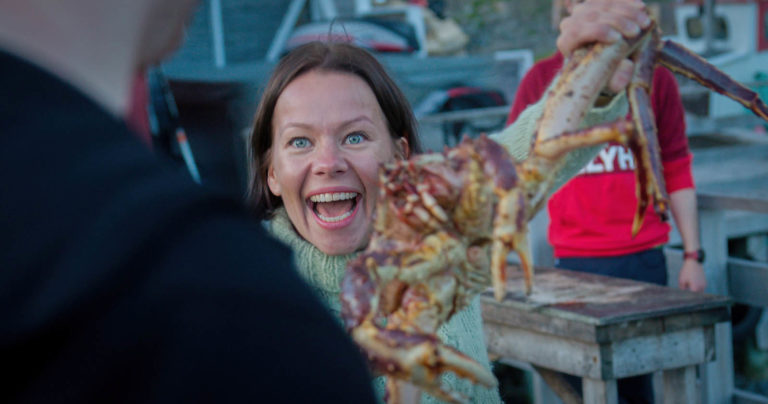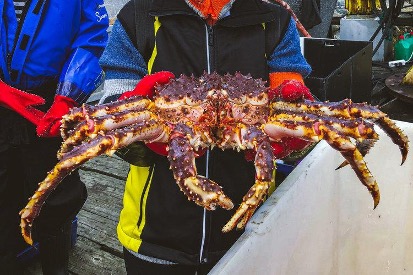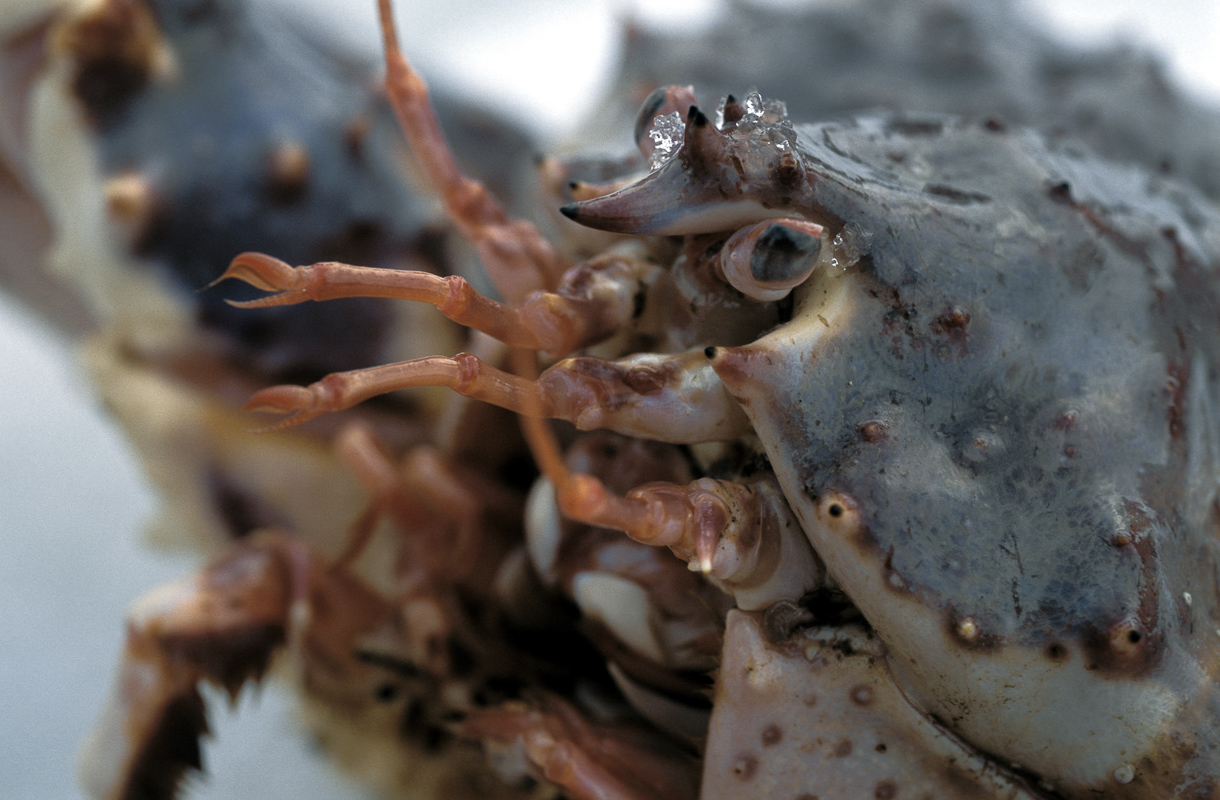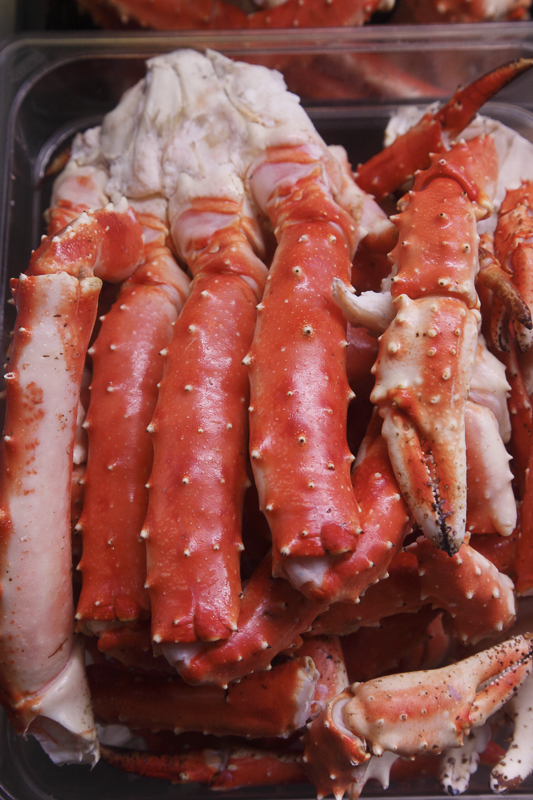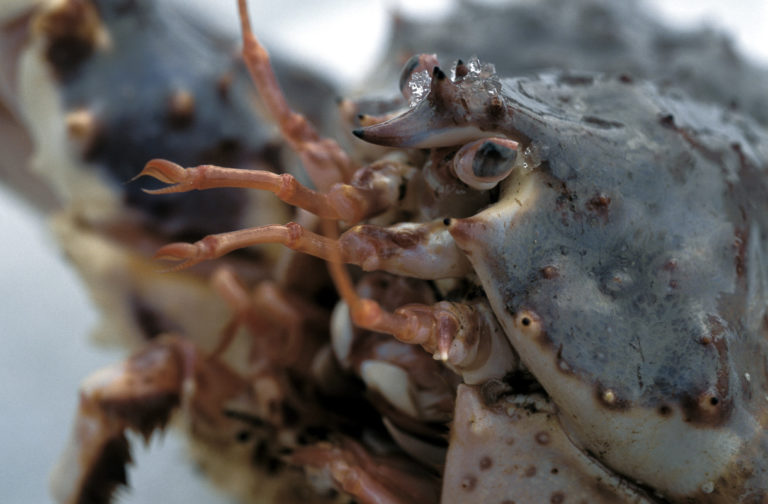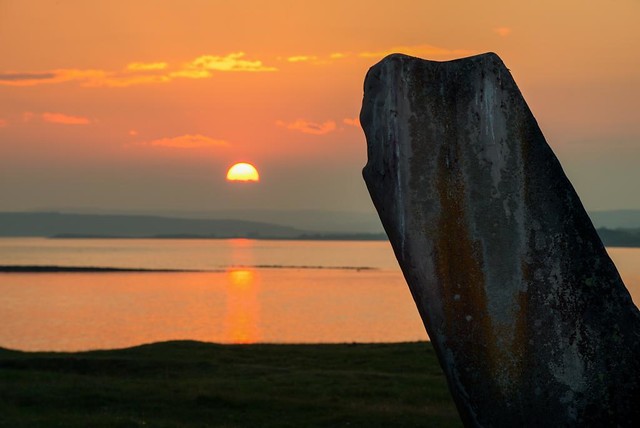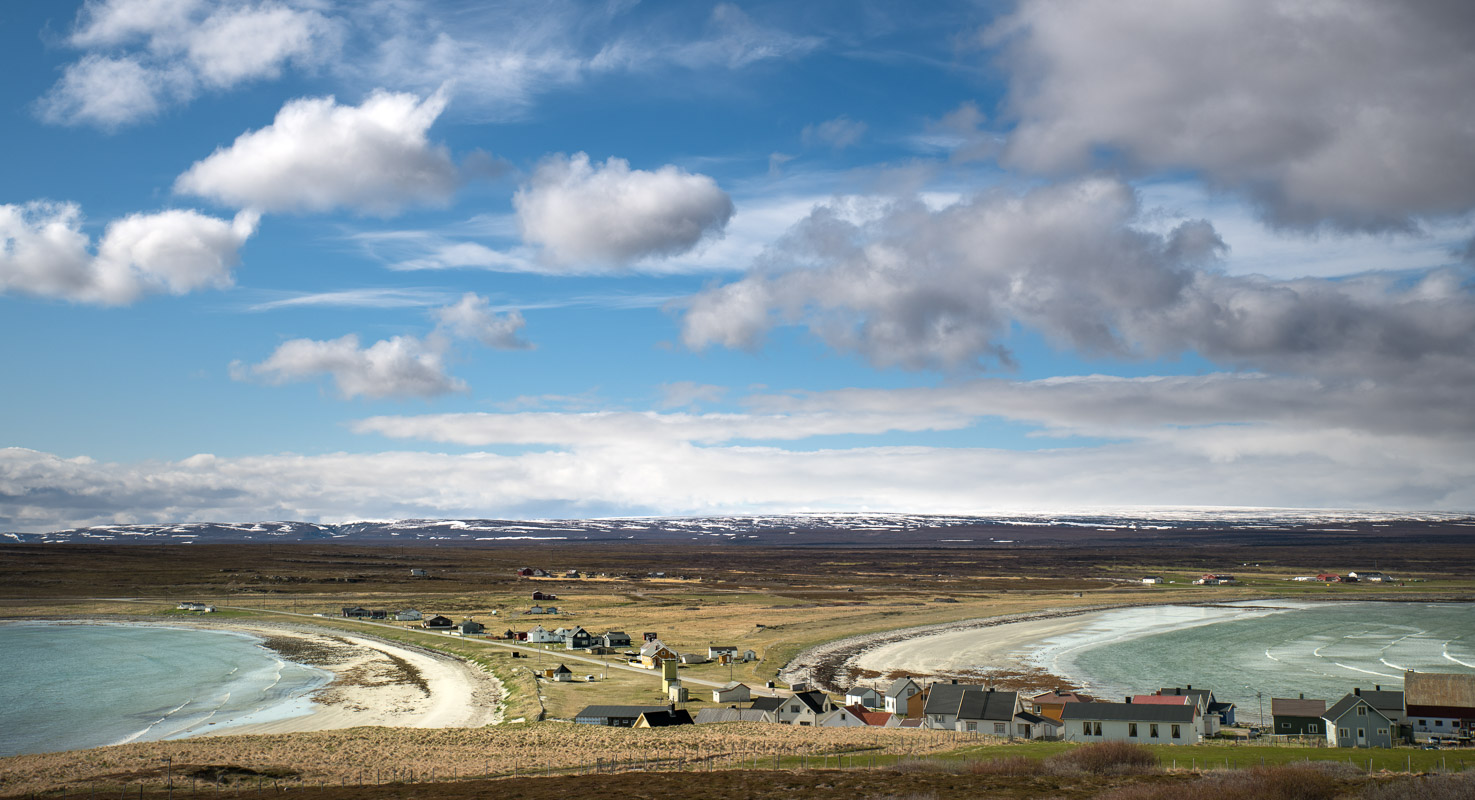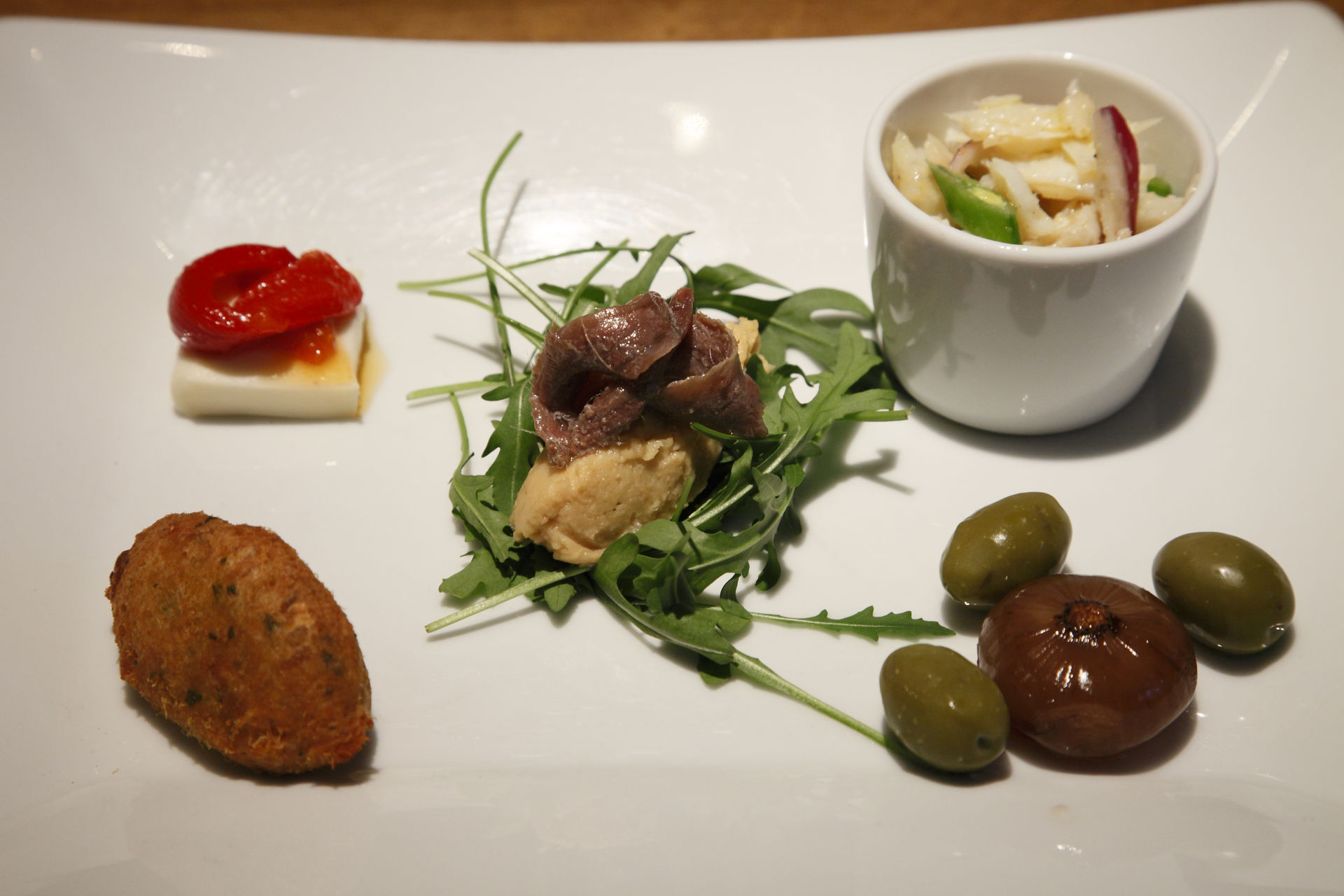The king crab is a new arrival in Norway. It actually stems from the northern reaches of the Pacific Ocean, and it was previously known in Norway as the “Kamchatka Crab” after the peninsula on the east coast of Siberia. In the 1960s, Soviet biologists started to release these crabs into the Murmansk Fjord. The crab thrived here, and as early as in 1977 the first king crab was caught in Norwegian waters, just west of the border. Since then, the crab population has expanded westwards, and crabs are now to be found off the coast of West Finnmark and Troms. However, the crab colonies are densest from the North Cape and eastwards.
King crab fishing
The fishing village of Bugøynes in South Varanger has specialised in catching king crabs. The main season is from October to January, when the crab shells contain the most meat. The catch is regulated through an agreement with Russia, although a fair amount of king crab is included as a secondary catch in East Finnmark.
Frequently asked questions
The King Crab you find in the Barents Sea are the largest species of King Crab. Carapace width of up to 28cm (11 inches), a leg span of 1.8 meters (5.9ft), and a weight of 12.7 kilograms (28lb).
Normally, King Crabs will live between 20 and 30 years.
Ecological concerns
Few topics are as hotly discussed among the fishermen along the coast as the king crab. Some think that it is upsetting the ecological balance in the sea as it eats everything in its path. Others believe that it is a valuable supplement to the Norwegian fishing industry. However, the communities west of the North Cape are not keen on the crab establishing colonies there, so there are no restrictions on king crab fishing.
Tourist Fishing
Fishing for king crabs is easy and fun. You sail out on a boat and then draw in the pots – possibly with the assistance of a diver. All of a sudden, the deck is covered with scrabbling king crabs, and you can have your photo taken with a giant in your hands. Even though they look nasty, they are not dangerous at all, as long as you follow the crew’s instructions. Most of the crabs are released again – we only take what we need to make a good meal. Then it is time to return to dry land, kill the crabs and boil them in seawater. We eat them then and there, with bread, mayonnaise and perhaps a glass of white wine – nothing else. This is the finest fare of all!
Crab delicacies
Feasting on king crab like this is an absolute luxury. At the finest restaurants in Oslo, only Norwegian lobster can match its price. The very best restaurants in Northern Norway serve king crab in all kinds of ways, with all kinds of trimmings.
